Launch Week Day 1: A new dashboard experience
 Lars Kamp
Lars Kamp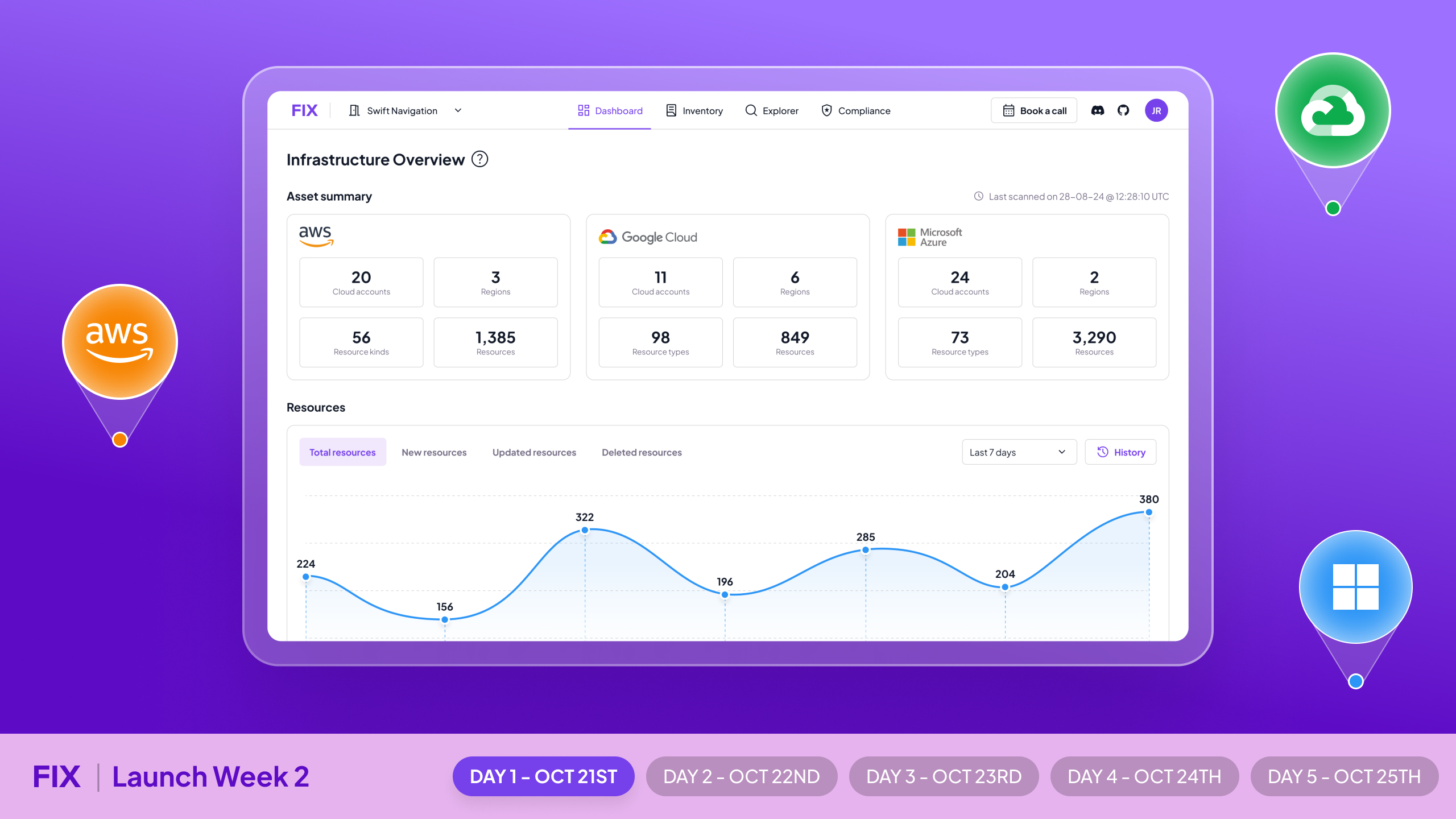
Welcome to Day 1 of our October 2024 Launch Week. Today, we're introducing our redesigned dashboard featuring two new tabs: Infrastructure Overview and Inventory. These updates aim to enhance multi-cloud security management for AWS, Google Cloud, and Microsoft Azure users.
The cloud visualization challenge
Understanding and visualizing cloud data is hard, in particular when you deal with more than one cloud. Three reasons why:
All cloud providers offer common services such as compute, storage, networking, databases, etc. But the way these services are presented to customers, whether through web consoles, command-line interfaces, or APIs, is idiosyncratic to each provider. This diversity in data formats requires different parsing and interpretation methods for each provider, making it making it inconvenient for users to learn each provider's system, and often outright inaccessible for those without a technical background
Inconsistent resource types and naming conventions across cloud providers add another layer of complexity. What AWS calls "EC2 instances," Azure refers to as "Virtual Machines," and Google Cloud labels as "Compute Engine." Similarly, storage services have different names: "S3" in AWS, "Blob Storage" in Azure, and "Cloud Storage" in Google Cloud. Even networking constructs vary, with "VPCs" in AWS and Google Cloud being equivalent to "Virtual Networks" in Azure. This lack of standardization in terminology and resource categorization makes it challenging to create uniform reports and draw direct comparisons across different cloud environments.
Cloud-native infrastructure and automation add a dynamic element. Auto-scaling groups can add or remove instances, serverless functions can scale from zero to thousands of instances in seconds. Add frequent updates from continuous deployment pipelines, and you have an environment that's constantly in flux. Keeping track of these changes, maintaining an accurate view of the infrastructure, and identifying critical misconfigurations requires continuous monitoring.
These challenges create barriers to achieving a baseline understanding of an organization's cloud infrastructure and security posture across providers. It's these hurdles that our new dashboard design aims to overcome. Our solution provides a unified, clear, and up-to-date view of multi-cloud environments.
Aligning DevOps and security teams
Good cloud security means collaboration between DevOps and security teams, while acknowledging that each group has its own priorities.
DevOps engineers focus on the operational aspects of cloud infrastructure. They prioritize rapid infrastructure deployment to meet business needs. Scalability management ensures systems can handle varying loads. Performance optimization aims to deliver the best possible user experience and operational efficiency.
Security engineers concentrate on protecting the company’s infrastructure. Their core responsibilities include risk assessment and mitigation, identifying and addressing potential misconfigurations. Compliance monitoring ensures adherence to industry standards and regulations. Threat detection and response involve monitoring for potential breaches and acting when threats are identified.
Our new dashboard design addresses these diverse needs, creating a shared operational view. By providing a unified platform that caters to both groups' priorities, we enable better collaboration.
Redesigned dashboard: Solving multi-cloud visualization challenges
Our dashboard redesign directly addresses the cloud visualization challenges while serving the needs of both DevOps and security teams. It introduces two key features: the Infrastructure Overview and the Inventory tab.
Infrastructure overview tab
The Infrastructure Overview tab provides a consolidated view of your cloud resources, regardless of if you’re running in one, two or three clouds.
Resource distribution across cloud providers, regions, and accounts
Timeline of resource changes (creation, updates, deletion)
Global map displaying resource density by region and cloud provider
This feature tackles the challenge of disparate data sources by unifying information from AWS, Google Cloud, and Azure into a single view.
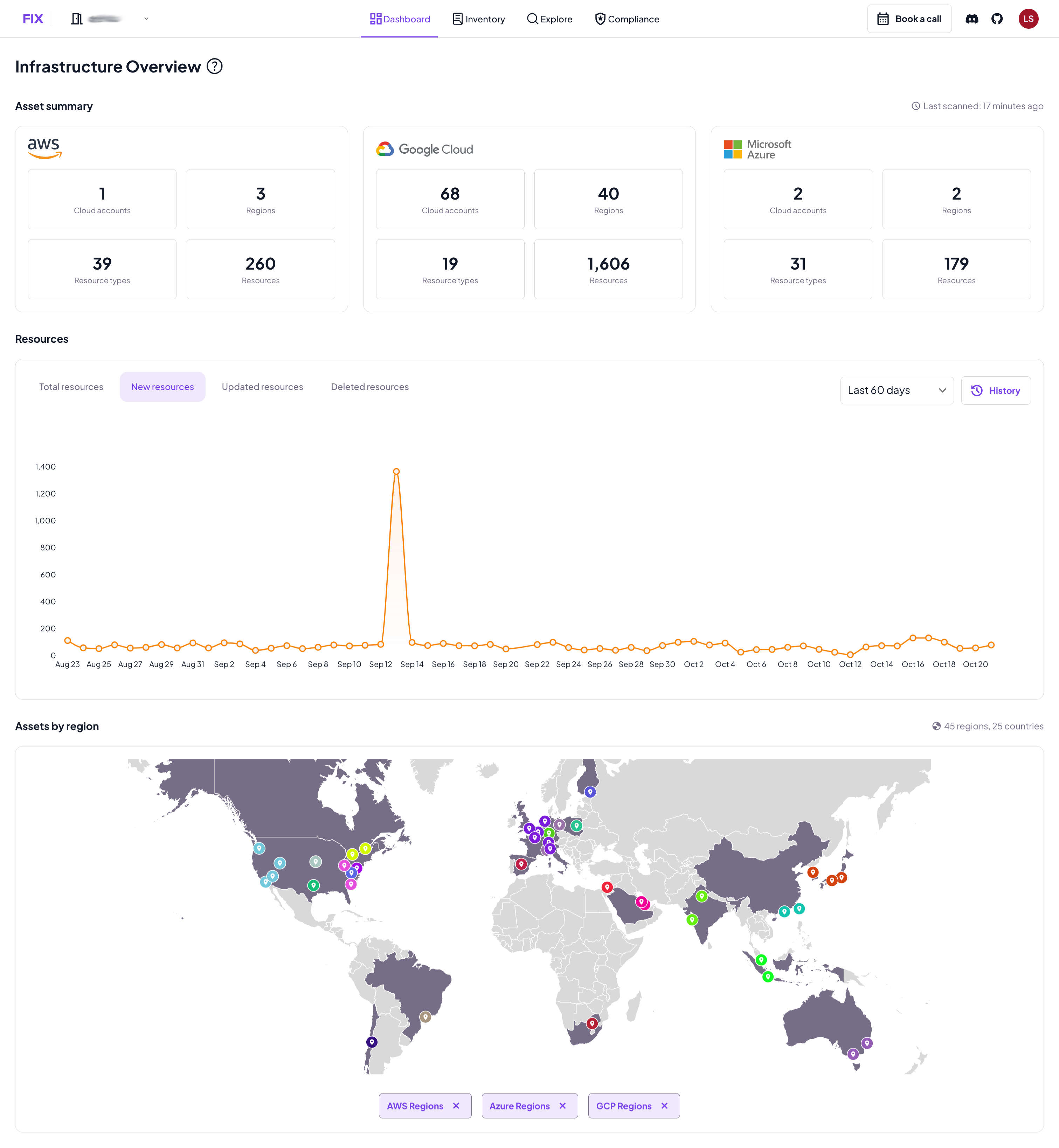
For DevOps teams, the Overview tab offers insights into resource distribution and deployment patterns. Security teams benefit from the ability to quickly identify unusual resource deployments or changes that might indicate potential risks.
Inventory tab
The Inventory tab offers detailed insights into deployed resources:
Categorized resource listings (Compute, Storage, Networking, etc.)
Service usage breakdown across cloud providers
Advanced filtering and search capabilities
By standardizing resource types and naming conventions across cloud providers, the Inventory tab addresses the challenge of varying terminologies.
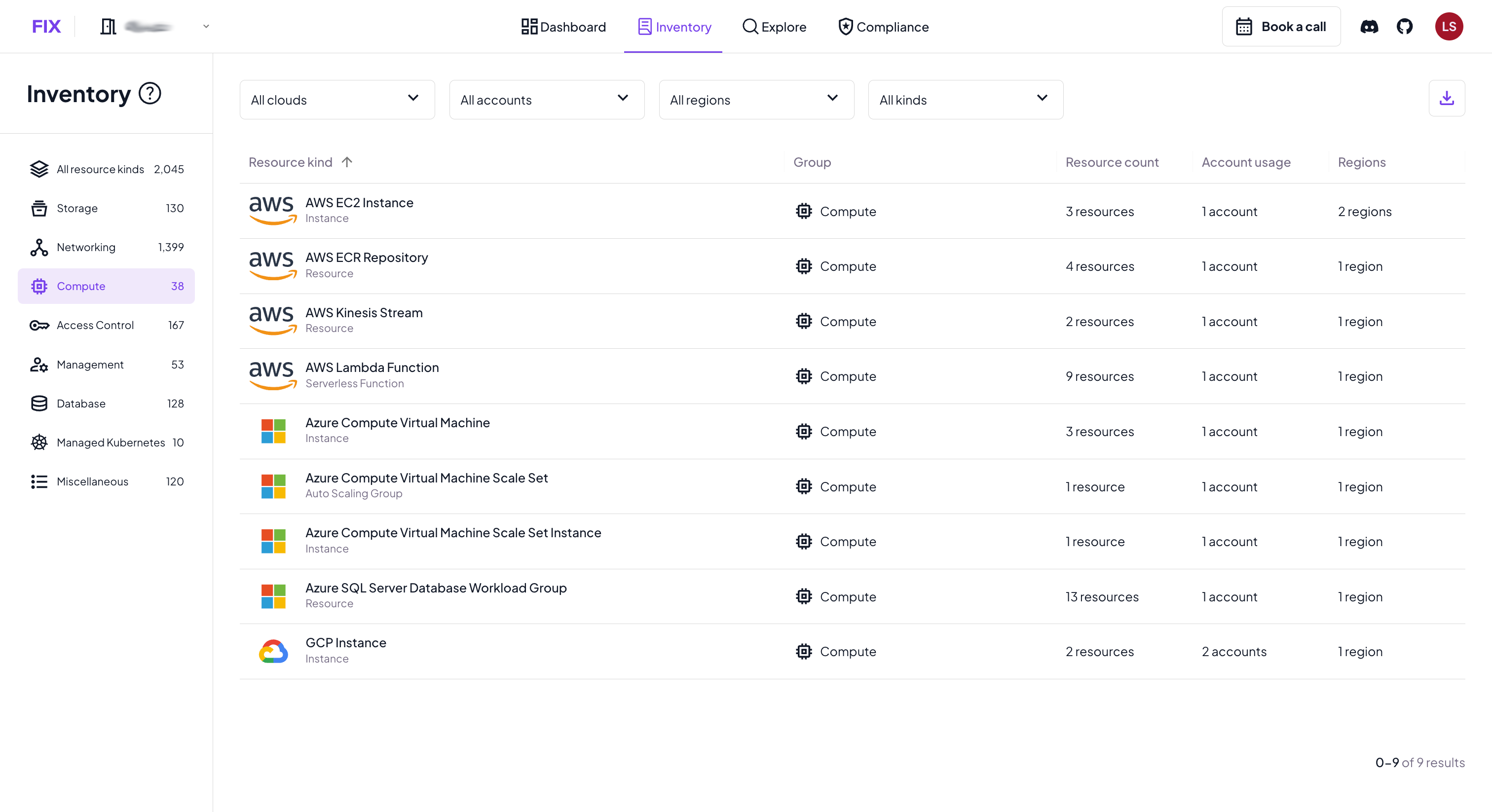
DevOps engineers can track resource deployment and identify usage patterns. Security teams can maintain a comprehensive view of the attack surface and ensure compliance across all cloud environments.
In addition, we’ve created detailed descriptions for every cloud service. It’s simply impossible for security engineers to know about every unique cloud service, how it works and interacts with other resources. AWS alone has over 200 services by now.
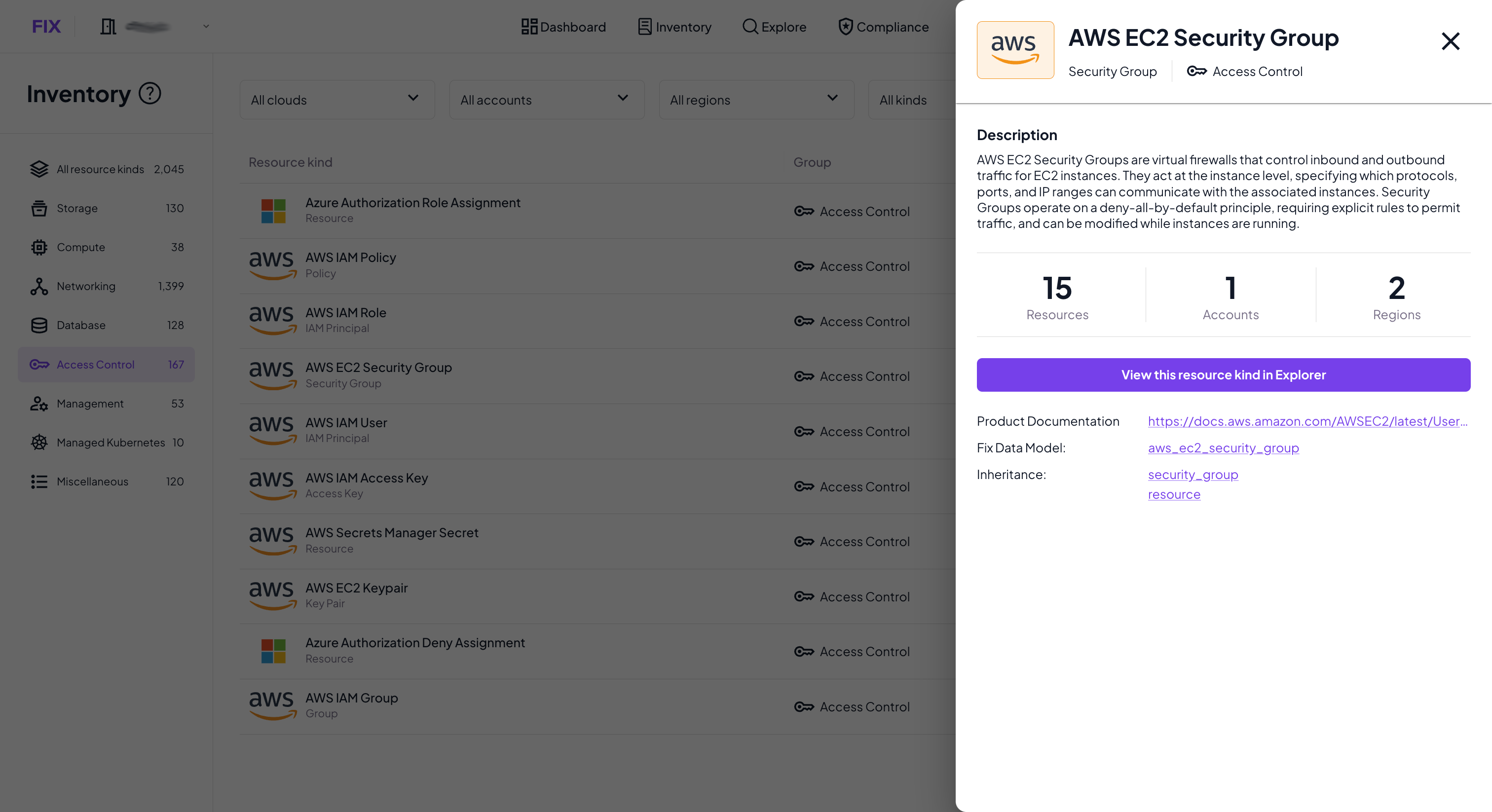
That’s why we included a Resource Detail view, with more context on each cloud service and with links to the the cloud provider’s documentation. We also included links to our docs and the underlying data model. Our data models have a detailed view of resource properties, and how a resource connects with other services.
Configuration diff
Cleary it’s also of interest to know what exactly changed, and so we also included a timeline perspective for every resource, including a “diff” - the actual configuration change that occurred.
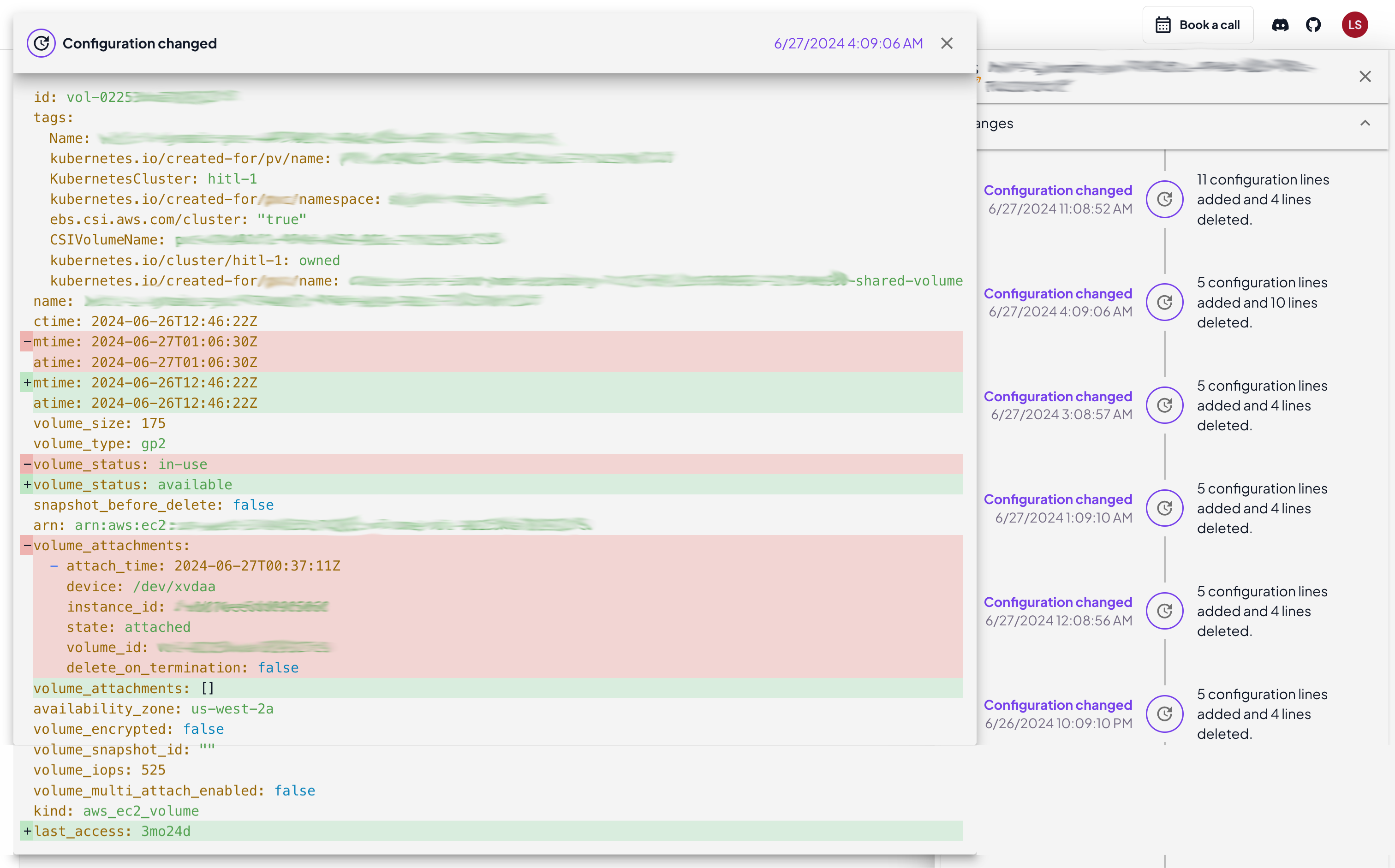
The diff for each resource is available in our Explorer tab.
Unified design approach
Our goal was to ship a dashboard that visualizes cloud data in a way that it conveys information clearly and simplifies cloud security:
Icons and color-coding for each cloud
Hierarchical layouts showing resource relationships (in our Explorer)
Interactive elements for detailed exploration
These design choices enable both DevOps and security professionals to interpret data quickly and make informed decisions.
By combining these features in a single, intuitive interface, our redesigned dashboard bridges the gap between DevOps and security teams. It provides a unified view that enables effective collaboration, faster problem-solving, and comprehensive cloud management across multiple providers.
Go ahead and check these new dashboards out with your own data, or sign up for a free trial. We include a free security posture assessment with each trial.
Subscribe to my newsletter
Read articles from Lars Kamp directly inside your inbox. Subscribe to the newsletter, and don't miss out.
Written by
